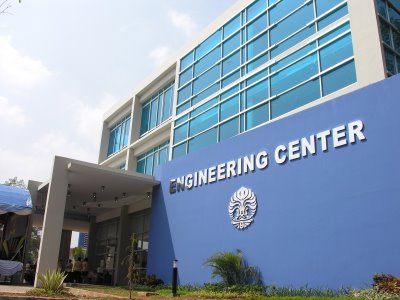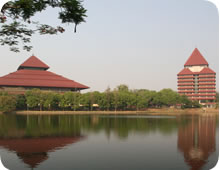

CCIT, Universitas Indonesia
Universitas Indonesia (UI) is internationally recognized as one of Asia’s top universities. Founded in 1849, UI is one of the oldest educational institutions in Asia and is steadily growing into a modern, sophisticated, multi-cultural community. UI’s goal is to attain the highest level of excellence in discovery, development and knowledge diffusion through strategic communities regionally and globally. As one of Asia’s most reputable research universities, UI strives to foster a progressive program of academic invention and research activities. This is achieved through a multitude of scientific programs in engineering, humanities, natural and social sciences.
Currently with more than 400,000 graduates in the marketplace, UI’s alumni are strongly positioned for national and international public service. UI’s unwavering commitment to create and maintain the highest possible education system has set new international benchmarks. Its exemplarily research and publications have drawn the attention of numerous universities, resulting in collaborative efforts.
In order to strengthen and broaden its international network, UI actively participates in regional and international education and research associations. Several prominent learning institutions have cooperated with UI on a wide range of academic fields of study. The most notable associations are: APRU (Association of Pacific Rim Universities), AUN (ASEAN University Network) and ASAIHL (Association of South East Asia Institution of Higher Learning). UI incidentally, is one of the members of the board of Directors for the Association of Pacific Rim Universities (APRU).
UI has two main campuses. The first is situated in the central business district at Salemba, Central Jakarta and the second, in the lush environment at Depok in West Java. The Depok campus is set amongst 320 hectares of carefully maintained tropical greenery, half of which is set aside exclusively as an ecological laboratory and conservation area. 25 percent of the area is strictly used for academic, research and student activities, while the remaining 75 percent is allocated for reforestation. In total, UI has eight lakes spread across its grounds, which are maintained diligently to protect their delicate eco-systems. As a testament to UI’s commitment to an ecologically balanced campus, over 20 kilometers of bicycle paths have been created and shuttle buses provided for students and faculty.
The Center for Computing and Information Technology (CCIT) is a unit of the Faculty of Engineering, University of Indonesia. CCIT-FTUI was established in 2002 in anticipation of the high demand for skilled workers and advanced professionals in the field of IT, especially software engineering.
Since its establishment, CCIT-UI has been attempting to meet the needs of various industries by creating human resources competent and skilled human resources in the area of IT. CCIT provides the best quality education to the new generation of Indonesian, helping them face the challenges that lie in the Information and Communication Technology domain.
CCIT-FTUI formalized a partnership with NIIT in 2008 and has launched two centers in Jakarta, Indonesia. For More details, visit
www.ccit.eng.ui.ac.id
Universitas Muhammadiyah Yogyakarta

A glimpse journey in UMY as a socio-religious movement, Muhammadiyah is undoubtedly a modern phenomenon that was established by KH Ahmad Dahlan in Yogyakarta in 1912. The modern characteristic manifests itself in three main points, which form an organized movement, which refers to the educational activities of modern school models for the size of his day, and the technological approach used in developing the organization's activities, especially charity efforts.
The main concern in the development of human resources was also likely to encourage the forging of Muhammadiyah activists to establish a university in the "capital" of Muhammadiyah, Yogyakarta. Intention of establishing Muhammadiyah University of Yogyakarta (UMY) has been around for a long time. Prof. Dr. Kahar Muzakkir on various occasions threw the idea for the need of the establishment of University of Muhammadiyah.
When Muhammadiyah Teaching Council inaugurated the Faculty of Teacher Training and Education in Yogyakarta on 18 November 1960, the founding charter explicitly included as part of Guidance and Counseling, University of Muhammadiyah. After passing through a difficult and tiring time, UMY now has seven faculties, namely the Faculty of Islamic Studies, Faculty of Economics, Faculty of Law, Faculty of Social and Political Sciences, Faculty of Medicine, Faculty of Agriculture and the Faculty of Engineering. Improving the quality of HR managers receive top priority in the development of UMY. Therefore, every year UMY sends about 30 lecturers to follow-up study of S2 and S3, both at home and abroad.
UMY’s vision is “Being a university that excels in the development of science and technology based on Islamic values for the benefit of the people”. UMY is working towards the creating of the noble Muslim scholar, who is competent, confidenta and able to develop science and technology, and one who is useful for the people, nation and humanity .
NIIT formalized its partnership with University Muhammadiyah Yogyakarta in December 2010 to develop a network of cooperation with various national and international institutions to promote education, research, and education management.
For more details, visit www.umy.ac.id